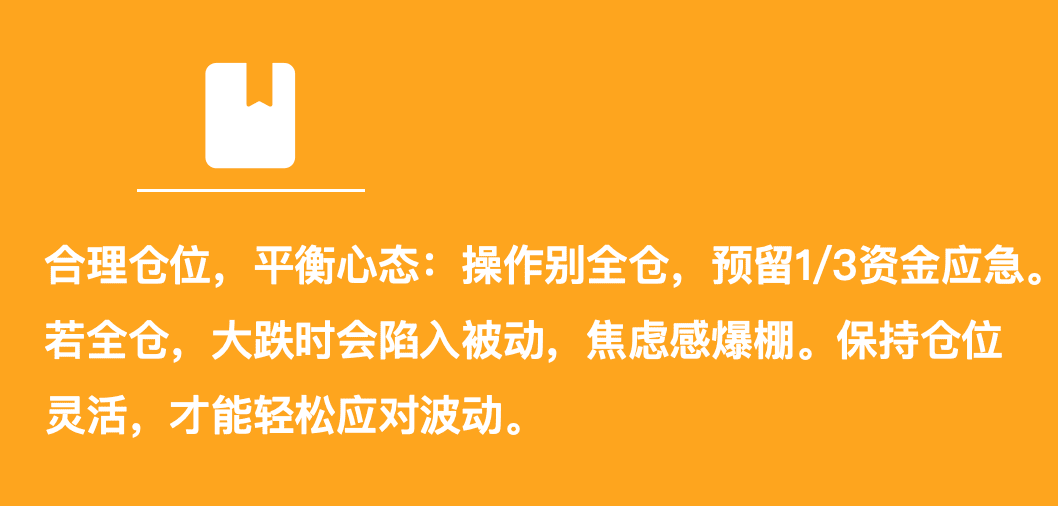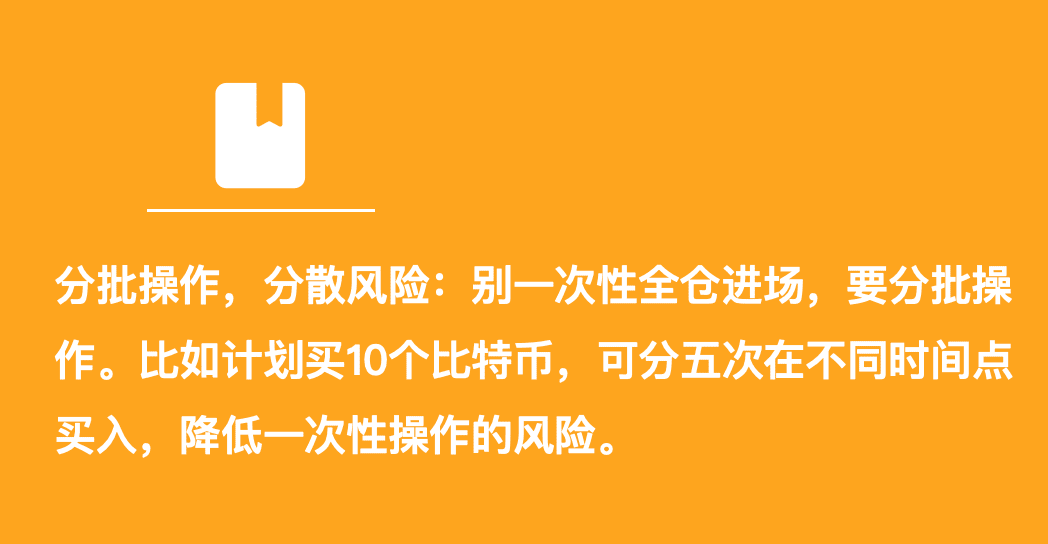Financial freedom at 38! Entered the crypto world at 25 and earned an eight-figure sum in ten years.
A bloody warning: 99% of people fail due to 'mindset' rather than technique!
At 25, I jumped into the crypto world with all my savings of 50,000; at 38, I earned enough to spend for a lifetime through crypto trading, with assets exceeding ten million. No team,
No insider info, even never worked a day—now I wake up naturally every day, walk the dog, drink tea, look at K lines, worries? Nonexistent.
But if you think this is a 'feel-good article,' you can scroll away now.
The truth I want to tell might make 80% of crypto people shiver.
Making 10 million does not require extraordinary ability; you just need to understand the principle of making money.
First, you need a catalyst, which is the cash flow from your off-market income. For example, 50,000 to 100,000 a year. This is to ensure that you don't have to sell assets and miss opportunities.
Second, when facing good opportunities, such as a bull market or a bear market in the crypto world, do not over-invest. This over-investment does not mean you can't heavily invest; it means you can't let this joy cloud your judgment and make unnecessary moves, and you must not add various leverage or borrow.
If you achieve these two points, for the third point, you need a bubble opportunity. A bubble opportunity refers to when everyone's assets explode, and when playing the same target, everyone is rich; at this time, you must sell to turn the bubble into art. The market can make everyone have floating profits, but it cannot make everyone profitable; when everyone is floating, it's a bubble opportunity, sell decisively.
Moreover, you need to experience 1-3 bubble opportunities, master the methodology to burst bubbles, and keep the money without any use, buying in when there are no more bubbles.
If you just hold on without action, you will most likely not be able to hold on; you must actively apply methodologies, it's not just about holding, with more money, you can hold, but with less money, you need to give up a bit of security to gamble on the bear market cycle.
When everyone advises you not to buy, and everyone says you can't buy, there is a huge cognitive difference inside.
They are the source of your access to the bubble. If they all say it's good, you will definitely be pulled down, and there will be no opportunity.
Bubble-explosive asset types must not be altcoins or worthless coins; if you sense a possibility of dying, you cannot choose it.
You must go through 2 cycles and still keep going up; the only certainty is BTC.
Another aspect is the mindset section.
There's a question I've been particularly conflicted about: if I spend my life without getting married or having children, saving every penny to become rich, then when I'm old, I have developed a frugal habit, and I have no heirs to inherit my wealth, isn't my life quite sad? But if I don't do this, I'll also be broke when I'm old, which is also sad.
Rest assured, even if you live frugally, you won't become rich. If the process of making money doesn’t make you obsessively interested and doesn’t provide intrinsic motivation beyond merely earning money, you won’t be wealthy, and there won’t be anything for others to inherit.
You must spend when you need to; live a normal life. I've walked the path of frugality, which is the behavior of a madman. Now I understand that it's actually wrong. Most people can't get through it. In the end, it will lead to mental breakdown.
After earning 10 million, how to keep it.
1. Some targets are opportunities of the era; the next one will have to wait. There will be assets like this after BTC. But you have to wait.
Targets will change, but human hearts will not.
2. Can you maintain the same consumption level after having a net worth of 10 million? It’s not about saving; it's about maintaining what you had before, that's the key.
3. You can't expand without restraint; once you have money, you start spending wildly; this is a sign of decline.
4. Break free from the cognitive pressure caused by social relationships, such as people asking to borrow money from you, seeking investment, or emotionally blackmailing you.
Some will be taken away by women, some will be taken away by friends. Once you have money, someone will definitely find a way to get money from you.
You are the customer of everyone around you; you need to be cautious; most people can't get through this barrier.
Those who break through will lose a lot and gain solitude.

Over the years of tossing around in the crypto world, I've made money, lost money, and even been liquidated.
But one thing I am sure of: the people who make money in this market have never relied on luck.
It's about execution, discipline, and experience—along with a robust trading system.
Today, I will summarize the pitfalls I've encountered and the money I've earned over the past few years into a few pieces of practical advice for you.
1. Fund allocation = the lifeline of trading.

I have always regarded position allocation as life.
The steadiest strategy:
40% allocate to BTC / ETH for a large market bottom position.
30% layout on projects with narrative, logic, and concrete implementation (like last year's AI narrative sector).
30% reserved for sudden opportunities and high-volatility altcoins.
If I'm fully invested in one direction, I will exit.
Two, stop-loss = the brake of your account.

I set my own rule: if a single coin drops more than 12%, I will stop-loss unconditionally.
You need to know, you are not just losing this trade; you are losing the future of the entire account.
There was a brother who stubbornly held onto a worthless coin, watching it drop from 80,000 to just 9,000.
He spent six months later patching the holes, and in the end, he couldn't even catch up with the bull's tail.
The first lesson in trading crypto is not to make money, but to learn to control losses.
Three, when the crowd is clamoring, it's best to quietly reduce positions.

I always believe in one saying: 'The market is not short of buying points, what it lacks is your calm moment.'
At the end of 2021, even the convenience store owner downstairs was talking about Dogecoin. I went home and saw that the RSI was over 90.
That day I decisively reduced my position by 70%.
A few days later, the market crashed, and everyone who asked me whether to chase was dumbfounded.
Trading crypto is not about joining the frenzy; the hotter the hotspot, the closer the danger.
Four, the three technical signals I often use are simple, brutal but practical.

1. Volume expansion.
An increase must come with volume, at least 50% more than yesterday.
Otherwise, it's just a scam.
2. Bollinger Bands rule.
Lower band + closing, trial buy in.
Upper band + opening, gradually take profits.
At the beginning of this year, DOGE was grabbed like this, with an 80% swing.
3. MACD golden cross.
A daily golden cross + above the zero line is my favorite offensive signal.
Five, you think making money relies on judgment, but actually, it relies on execution.

You think you have no chance, but in reality, you've never held onto a real opportunity.
When the account rises, money arrives on the card, and the path becomes clear, only then do you understand—
In this market, what you earn is not the trend, but the principles.
From 100 bitcoins to not squeezing the morning rush: those who survive the night in the crypto world understand that 'belief' is more valuable than code, consensus is the foundation.
What you think the crypto world is, is throwing down a seed and waiting ten years to open the door—what you see is a forest.
The reality of the crypto world is that you just planted that seed, and after one night of wind and rain, only half remains in the soil the next day.
That entire year, you woke up every night, not because of being woken up by urge to pee, but by your own heartbeat.
You pull out your phone, the screen light glaring in your face:
One thousand, three thousand, five thousand... back and forth, like a night that will never dawn.
Later, you finally couldn't take it anymore, telling yourself: 'If it returns to nine thousand, even if I lose, I will accept it and end it here.'
As a result, you just cut your losses, and a few days later, the coin you held for over a year suddenly skyrockets.
Head straight for numbers you've never dared to imagine.
And you, standing downstairs, looking at the shirts hung on others' balconies that symbolize financial freedom.
They say DOGE is air, it's a bubble, it's infinitely issued code with no value.
But have you ever thought that the crypto world is never an economics textbook; it is a battlefield of human hearts.
Why is bitcoin worth 200,000 each?
Not because it has gold backing, but because we all 'believe' it has value.
Consensus is the hardest currency in this circle.
I once owned over 100 bitcoins.
It wasn't after the surge, but when many people didn't even know the term 'blockchain.'
I transitioned from part-time crypto trading to full-time trading, not because I was particularly talented.
It's because I've endured too many 'waking up to pee but still wanting to see the market' nights.
The greatest freedom after having money is not to squander it, but that you can finally be 'not in a hurry.'
You no longer have to squeeze into the crowded morning subway, you no longer have to watch your boss's face, you no longer have to struggle over whether to add pearls to a cup of milk tea.
You start having time to think, read, and wait.
You become capable not because you are smart, but because you can afford to lose.
Why is it easier to pump the market now?
Because the retail investors have already been shaken out, the chips are already concentrated in the hands of a few.
By simply matching trades, you can stir up a wave of frenzy.
If you have nothing, I would actually suggest you pay attention to the crypto world.
It's not about rushing in blindly, but learning to observe, learning to wait, and being calm when others are fearful.

Earn a million in a year? This simple method allowed me to do it steadily.
To be honest, making a million in the crypto world in a year isn't difficult; what's difficult is not getting liquidated. Today, I share my 'Turtle Strategy' that I keep close to my chest—slow, but terrifyingly stable.
Core gameplay (taking 10,000 as an example).
1️⃣ Divide the money into 5 parts, each part 2000 yuan.
2️⃣ Buy the first portion at the current price (2000 yuan).
3️⃣ Add a position after a 10% drop, sell a portion after a 10% rise.
4️⃣ Cycle operations until the bullets run out or the coins are sold out.
Why does this trick work?
Don't be afraid of drops: if it really drops to 50%, you only bought 5 shares, how trashy is this coin?
Profit with every rise: lock in profits every time it rises by 10%, as comfortably as collecting rent.
Super stable mindset: no need to watch the market, eat when you need to eat, sleep when you need to sleep.
Advanced techniques.
✔️ Choose coins steadily: BTC/ETH, don't play with altcoins.
✔️ Reduce the amplitude: 5% fluctuations are fine, transactions are more frequent.
✔️ Idle funds: throw into a crypto treasure to earn interest; even a mosquito's leg is meat.

Real case.
Last year, I operated with a principal of 100,000 yuan.
Earn 2000 each operation (10% profit).
Master 3-4 rounds in a month.
Easily break a million annualized.
Lastly, a heart-wrenching statement.
This method earns hard-earned money, but is 100 times more reliable than those 'hundred times myths.' Living long in the crypto world is the way; what do you say?
Remember: Don’t be greedy, strictly execute, and time will surprise you.
How to achieve 'reverse loss control in headwinds, and expand profits in tailwinds' trading discipline?

1. Strictly control position during losses, increase gradually during profits.
When there are floating losses in your position, refuse to average down (adding to the position only amplifies risk exposure). If necessary, you can rely on deep analysis to choose to hold, but you must strictly adhere to the stop-loss line. Conversely, when the position gains floating profits, adopt a breakthrough strategy to increase the position, and immediately set a breakeven stop-loss line to convert floating profits into a safety cushion.
2. During the matching period of the market, go all out; during the mismatch period, actively hibernate.
The market has obvious style cycles; beware of misjudging temporary trends as the norm. Historical retracement data shows that excessive confidence is the main cause of capital curve collapse—all significant losses stem from this. When trading logic continuously diverges from market trends, force a pause in trading to reset cognition.
3. Build a closed-loop trading system to filter out ineffective information interference.
Common retail investor issues like 'analysis paralysis' (over-research but not daring to act) and 'position anxiety' (premature profit-taking and stop-loss) are essentially external manifestations of a systemic absence. The solution lies in: establishing trading logic through real trading verification → extracting the risk management essence of top traders → iterating a stop-loss and profit-taking model with a probabilistic advantage, rather than being governed by fragmented market noise.

Trading with small funds, the dumbest yet most stable method: if your funds are under 100k, trading crypto is easier to profit from than stocks; this is a fact.
Here is a simple method for trading crypto; as long as you stick to it, achieving stable profits is not difficult. Don't doubt that you can't learn it; seize the opportunity, and you and I can stand on the same starting line. Many people overlook this method; after learning it, you can earn at least 3 - 10 points every day.
Select coin types carefully; do not be greedy: there are many coin types in the crypto world, and small retail investors have limited time, so never trade too many at once. Choose at most 2-3; if you operate too many coins, it becomes difficult to make reasonable judgments during market fluctuations, making it easy to make mistakes.
In times of rise and fall, respond calmly: when the market surges, don’t impulsively chase fantasies of getting rich; when it drops sharply, don’t panic sell out of fear of losing everything. Emotional fluctuations can easily lead to missed opportunities for correct operations; it's essential to stay calm.
Reasonable position, balanced mindset: do not go all-in, reserve 1/3 of funds for emergencies. If fully invested, you will be passive during a big drop, feeling overwhelming anxiety. Keeping your position flexible allows you to easily cope with volatility.

Set profit and stop-loss points, and refuse greed: clarify your goals, set profit points, and withdraw once you earn. Many people end up losing because of greed; they want to earn more and end up worse off. Set your profit and stop-loss points, let the computer execute automatically, and don't let emotions dictate your decisions.
Learn technical analysis: many investors in the crypto world come from the IT circle and lack basic financial investment knowledge. Instead of blindly following trends, it is better to spend a few days learning some basic technical analysis to improve judgment.
Operate in batches, diversify risks: don't go all-in at once; operate in batches. For example, if you plan to buy 10 bitcoins, you can buy them in five phases at different points in time to reduce the risk of a single operation.

Think independently and trust yourself: don’t easily believe others' analyses; the market opinions are varied. When making decisions, rely on your own judgment; price trends are difficult to predict accurately; believing in yourself is key.
Trading crypto cannot rely solely on following trends; mastering technical skills and maintaining a calm mindset is the way to success. If you can think independently, manage risks well, and set profit-taking and stop-loss points, the era of the crypto world will ultimately belong to you ....